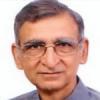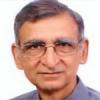The suicidal terrorist, Adil Ahmad Dar, rammed his explosive laden car into two trucks of a CRPF convoy on 14 February 2019. The blast led to the brutal murder of 44 jawans, a big national tragedy, most heinous and condemnable. In terms of scale and casualties, it exceeds even the Uri attack of 18 September 2016, in which four heavily armed terrorists targeted an Army brigade headquarters, killing 19 soldiers. The Pulwama attack is even more serious than car-bombing at the Jammu and Kashmir Legislative Assembly complex in Srinagar on 1 October 2001, that killed 38 people. Both the Uri and Legislative Assembly terrorist attacks are said to have been carried out by the Pakistan-based terror outfit Jaish-e-Mohammed (J-e-M). The same organisation has also taken responsibility for the Pulwama attack now.
In the aftermath of the Uri attack, India undertook a surgical strike in Pakistan, with the assumption that it is the fitting response to Uri terror attack. Pakistan denied any such attack having taken place on its soil. One recalls that even when demonetisation was undertaken, the claim was that it will curtail militancy in Kashmir as terrorists are able to operate with counterfeit currency, and demonetisation will render this currency useless. It is clear that there is no let up in terrorist attacks in Kashmir.
Following the attack, the Modi Government is trying to flex its muscles. Prime Minster Modi has declared that the army has been given a green signal to take suitable steps to counter the situation. Meanwhile, other developments taking place on the ground across the country are disturbing. There are reports that Kashmiri students have been threatened in various cities in several states. Tathagat Roy, the Governor of Meghalaya has given the call to boycott Kashmiris. A deliberate attempt is being made by Hindutva groups like Bajrang Dal, Vishwa Hindu Parishad and Bharatiya Janata Party supporters to whip up nationalistic passions with chants of ‘Bharat Mata Ki Jai’, waving of the tricolour, giving slogans against Pakistan, and associating Pakistan with Muslims. The likes of Anupam Kher and Sonu Nigam are spewing anger against secular and liberal people. At several places, vigilante groups are threatening Muslims. The situation in Jammu required the imposition of curfew as the threat to Muslims was palpable in the area. The BJP’s state chief of J&K Ravindra Raina and MP Jugal Kishore took part in the protests targeting the Muslims. The BJP has distanced itself from the violence without giving any statement condemning the participation of its leaders in these vicious protests.
The violence has left Kashmiri Muslims living in Jammu and other parts of India fearful.
It is another matter that in different places, many Muslim groups have come on the streets to denounce Pakistan and have strongly condemned the terror attack. The Chief of Ajmer Dargah, Syed Zainul Abedin, went to the extent of saying that people from Pakistan will be barred from visiting the Ajmer shrine. On one hand, activists and groups wanting peace have issued appeals for sheltering the targeted Kashmiris, while many local level leaders have threatened that those sheltering Kashmiris will be attacked. The speeches of communal elements are charging up the atmosphere in a very negative and divisive way.
How do we deal with this situation and bring peace to Kashmir? First we have to identify as to why the region is gripped in such a terror. There are multiple components, which have got mixed up. The militancy in Kashmir began in the decades of 1960s and assumed horrendous proportions since the 1980s. The core issue was the feeling of alienation in Kashmir. The feeling is that their autonomy has been curtailed over a period of time. This autonomy was a part of the treaty through which Kashmir acceded to India. As per article 370, Kashmir Assembly has all powers barring the areas of defense, communications, currency and external affairs. The abolition of this clause has been the an important part of the Hindutva agenda of RSS–BJP.
After the accession of Kashmir to India, the communal groups started the campaign that Kashmir should be totally merged into India. This sowed the seeds of the process of alienation of Kashmiri people right from the 1950s onwards. As this alienation increased, it led to many elements becoming disgruntled eventually led to the birth of militancy, which was given full support from across the border by Pakistan. Another development which has fuelled the growth of terrorism in the region is related to the politics for the control of oil resources. This process was initiated by America which helped the grooming of Al Qaeda type elements in Pakistani madrassas. This process of grooming terrorist elements was not only encouraged by also totally funded by America in the 1980s (America spent 8000 million dollars and supplied armaments to the tune of 7000 tons). These terrorist groups, after winning the war against the Soviet/Russian occupation of Afghanistan, now became jobless and so entered Kashmir, taking advantage of the dissatisfaction that was already there. They trampled upon the unique culture of Kashmir, known as Kashmiriyat, a cultural synthesising of Buddhist values, Vedanta and Sufi tradition. This was one of the major factors which started the communalisation of the Kashmir problem and led to the exodus of Kahmiri Pundits from the Valley.
The Al Qaeda type terror groups, funded by America and housed in Pakistan, have now assumed the form of Frankenstein’s monster. Pakistan has lost over seventy thousand people in terror attacks, including the ex-Prime Minister of Pakistan, Benazir Bhutto. These terror groups do indeed get patronage from a section of the Pakistani army. The response to the situation of turmoil in Kashmir region requires a comprehensive understanding of the genesis and growth of terrorism in Kashmir. Adil Ahmad Dar, the Jaish-e-Mohammad recruit, is a local boy form Kashmir, who took the path of terror after being thrashed by the army. So far, most foot soldiers of the terror outfits have been from across the border. Now agitated local boys also have started joining these organisations. It is to be noted that during the last four and half years of Modi rule, the number of terror acts, recruits for terrorism and the army personnel killed in such incidents has gone up several times. An IndiaSpend analysis (a non-profit data portal) based on government data shows that over 800 terror incidents have been reported in J&K over the three years ending 2017, increasing from 208 in 2015 to 342 in 2017. As many as 744 people have died in these three years: 471 terrorists, 201 security forces and 72 civilians. While one can say that Pakistan based terror groups have played a major role in increasing the terror acts, it is equally true that this increase is the result of policies of the Modi regime, where dialogue has been replaced by bullets and pellet guns. Can terrorism be wiped out by bullets alone?
We of course need to improve the intelligence and security and prevent recurrence of such attacks. Surely the Pakistan based terror groups need to be punished and brought to book. At the same time, it also needs to be realised that a surgical strike and aggressive words cannot save the region from the present tormenting situation. War is no solution, war itself is the problem. It is the soldiers again who will have to bear the brunt of the damages of war. Along with that, the whole region will sink into an abyss from which recovery will take years. While pursuing a firm policy in Kashmir and with our neighbour, we need to initiate a solid process of dialogue with the disgruntled elements and with our neighbour to bring peace to the region. A lasting peace is what we need; temporary aggressive measures will not eliminate the seeds of terror in the region. We need to introspect and realise that while Pakistani support and housing of terror groups worsens the situation, unless we address the grievances of local people, the outsiders will keep making merry by instigating and supporting the local dissident elements.
The creation of an atmosphere of retaliation is worsening the situation. It is a short sighted response, and inadequate to eliminate the problem of terrorism in the region. The present atmosphere where Muslims are feeling insecure and Kashmiris are being targeted is worsening the situation. We do need to give an atmosphere of security and amity to all our citizens. An appeal of harmony from the top may restrain the communal elements who in their display of hyper nationalism are creating a situation which violates the principle of fraternity, the foundation of our nation and the base of our Constitution.







Comments
Add new comment